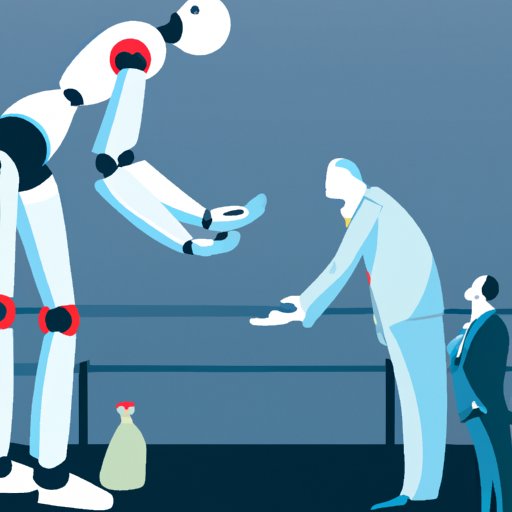Introduction
Robotics is an emerging field of technology that has the potential to revolutionize many aspects of our lives. Robots are defined as “automatically controlled, reprogrammable, multifunctional machines that can be used to perform complex tasks in a variety of settings.” But while robots have the potential to bring immense benefits, they also present some serious risks and drawbacks. This article will explore why robots can be bad for us and how we can address the associated problems.
Unethical Use of Robots
One of the major concerns with robotics is the potential for unethical or illegal applications. According to Professor Noel Sharkey from the University of Sheffield, “Robots are already being used in warfare, policing, surveillance, and other areas where it is difficult to apply ethical principles to their use.” For example, unmanned aerial vehicles (UAVs) are increasingly being used for military operations, which raises questions about their use in situations where there may be civilian casualties.
The use of robots for surveillance and data collection also presents ethical issues. As Professor Sharkey notes, “We need to be cautious about robots that are used to spy on people or collect sensitive information without their knowledge or consent.” For instance, facial recognition technology has been used to identify criminals and track individuals without their knowledge.
Dangers of Automated Decision-Making
Another major concern with robotics is the risk of automated decision-making systems making decisions that violate human rights. As Dr. Mariarosaria Taddeo from the Oxford Internet Institute explains, “Automated decision-making algorithms can lead to bias and discrimination, due to the fact that they are often based on existing social inequalities.” This can lead to decisions that adversely affect certain groups of people, such as those based on race, gender, or income level.
Moreover, robotic systems are increasingly being used in areas such as healthcare and criminal justice, where ethical considerations are paramount. As Dr. Taddeo states, “We need to ensure that the use of these technologies is balanced with human oversight, to ensure that ethical and legal standards are met.”
Job Loss Due to Robot Adoption
The increasing adoption of robots in the workplace has also raised concerns about job losses. According to research by McKinsey Global Institute, “By 2030, up to 375 million workers—or 14% of the global workforce—may need to switch occupational categories as digitization, automation, and advances in artificial intelligence disrupt the world of work.” This could lead to mass unemployment and a decrease in wages for those employed in affected sectors.
Furthermore, the use of robots in manufacturing could result in the relocation of jobs to countries with cheaper labor costs, leading to further job losses. As MIT economist David Autor points out, “The displacement of labor by automation and globalization has led to growing inequality and economic insecurity in the U.S. and other advanced economies.”
Cybersecurity Risks of Robotics
Robotics also presents a significant cybersecurity risk, as robots are increasingly connected to the internet and are therefore vulnerable to cyberattacks. As Professor Sharkey explains, “Robots can be hacked and taken over by malicious actors, resulting in potentially dangerous outcomes.” For instance, if a robot is used in a medical setting, a hacker could take control and cause harm to patients.
To prevent such incidents, it is important to take steps to secure robotic systems against cyberattacks. This includes using firewalls, encryption, and authentication measures, as well as regularly monitoring systems for any suspicious activity.
Environmental Impact of Robotics
Finally, the introduction of robots into society could have long-term environmental impacts. According to research by Imperial College London, “Robots consume energy and resources throughout their lifecycle, from manufacture to operation, and this must be taken into account when considering their environmental impact.” Furthermore, robots could lead to increased consumption of natural resources, such as water and fuel.
To minimize the negative environmental impacts of robotics, manufacturers should strive to produce more energy-efficient robots, and users should seek to reduce their energy consumption through strategies like shutting down robots when not in use. Additionally, governments should consider implementing policies to encourage the development of “green” robots.
Conclusion
In conclusion, robotics can be beneficial in many ways, but it also presents some serious risks and drawbacks. These include unethical uses, automated decision-making that violates human rights, job losses, cybersecurity threats, and environmental impacts. To address these issues, we need to ensure that robots are used responsibly, that appropriate safeguards are in place to protect against cyberattacks, and that steps are taken to minimize the environmental impacts of robotics.
(Note: Is this article not meeting your expectations? Do you have knowledge or insights to share? Unlock new opportunities and expand your reach by joining our authors team. Click Registration to join us and share your expertise with our readers.)
